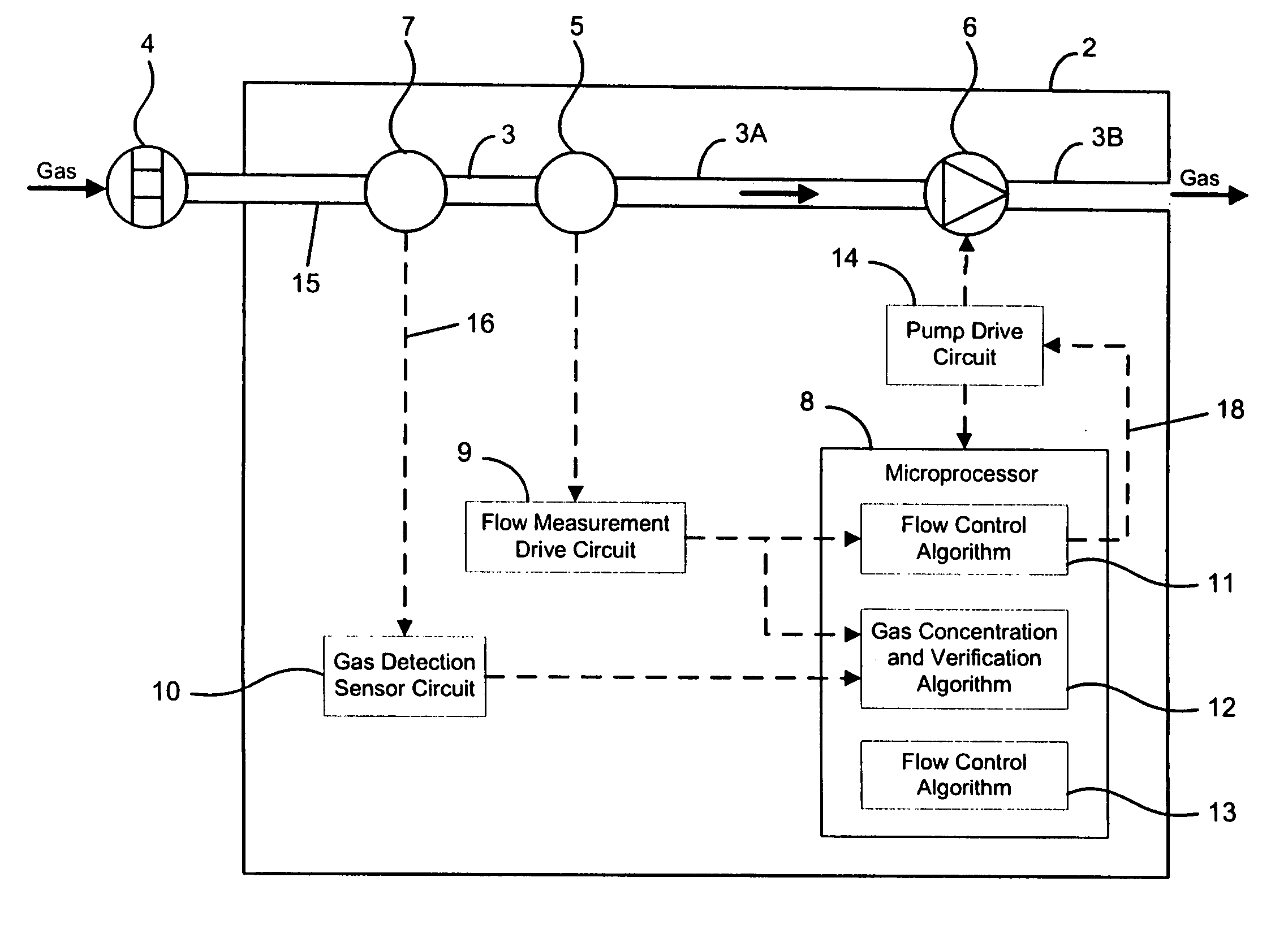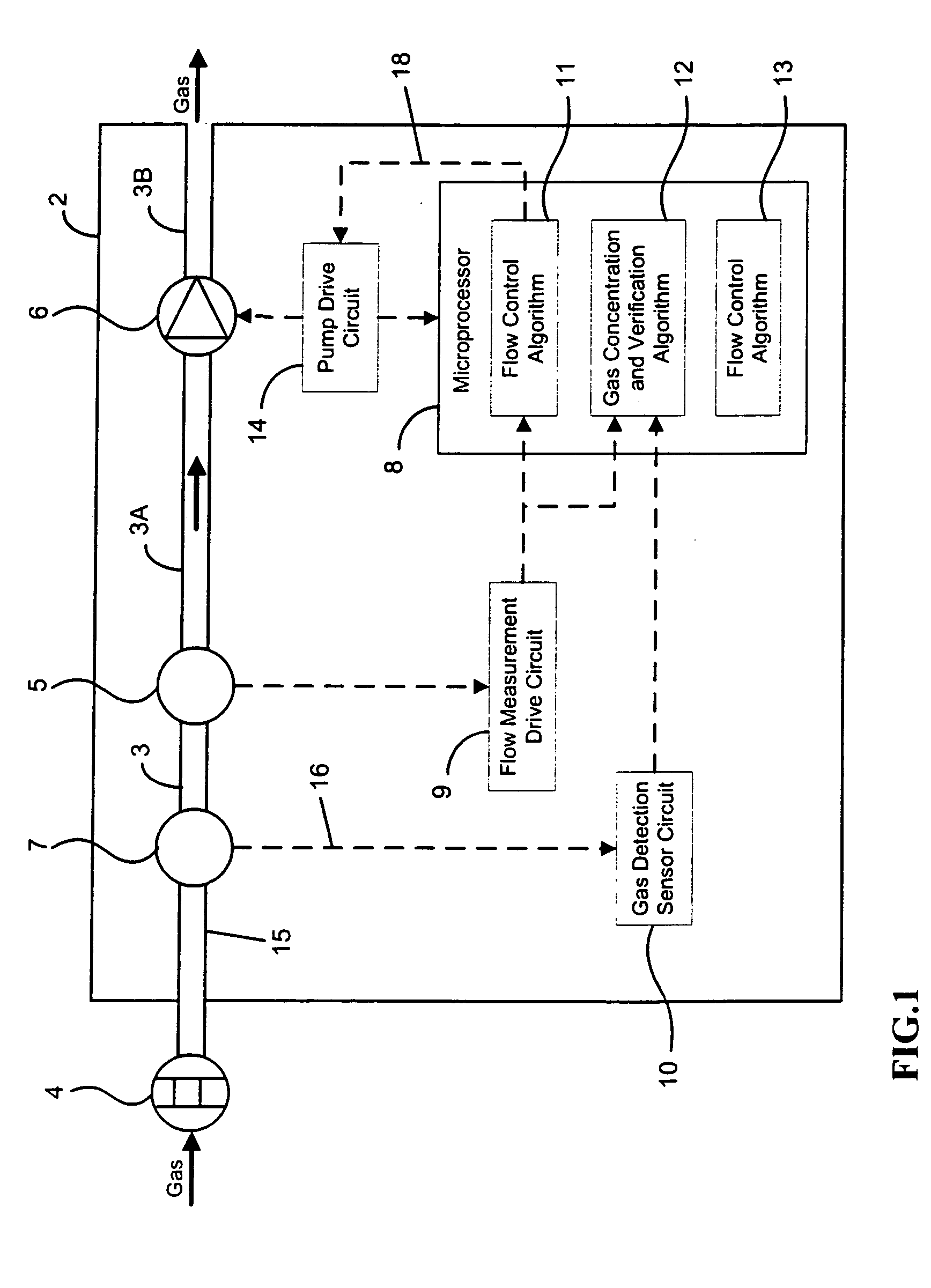Gas monitor using electrochemical cell and method of operating
- Summary
- Abstract
- Description
- Claims
- Application Information
AI Technical Summary
Benefits of technology
Problems solved by technology
Method used
Image
Examples
Embodiment Construction
[0030] Referring first to FIG. 1, gas is drawn from a volume being monitored through a filter 4 to a gas detection or monitoring instrument 2, which may be referred to as an aspirator. The gas being monitored is fed from the filter 4 through an inlet passage 15 to an electrochemical cell 7 (“sensor”). The gas is then routed through a passage 3 to a flow measuring device (flow meter) 5. The gas is then routed through a passage 3A to a gas pump 6 which returns the gas to the system being monitored through an outlet passage 3B. Pump 6 may preferably be a conventional diaphragm pump, having a controllable flow rate as described further below.
[0031] The EC cell 7 generates an electrical signal which is coupled along lead 16 to a conventional gas detection sensor circuit 10 which detects the signal of the EC cell 7 and processes it to a digital electrical signal representative of the output of the EC cell 7. This digital signal, in turn, is fed to a processor-based controller 8 which is ...
PUM
 Login to View More
Login to View More Abstract
Description
Claims
Application Information
 Login to View More
Login to View More - R&D
- Intellectual Property
- Life Sciences
- Materials
- Tech Scout
- Unparalleled Data Quality
- Higher Quality Content
- 60% Fewer Hallucinations
Browse by: Latest US Patents, China's latest patents, Technical Efficacy Thesaurus, Application Domain, Technology Topic, Popular Technical Reports.
© 2025 PatSnap. All rights reserved.Legal|Privacy policy|Modern Slavery Act Transparency Statement|Sitemap|About US| Contact US: help@patsnap.com



